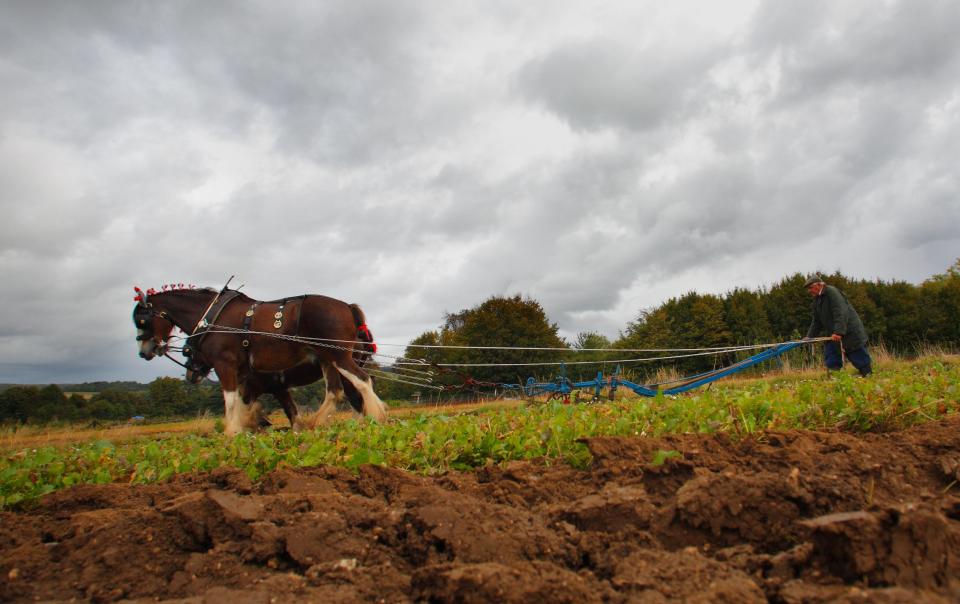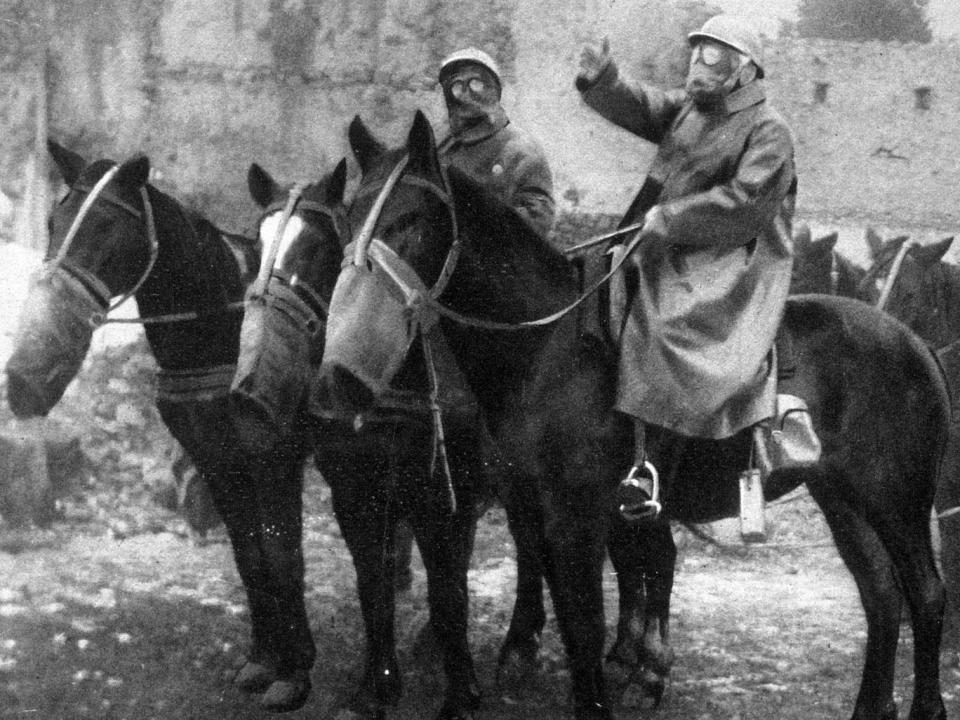Is the Great British shire horse about to go extinct?

Having served faithfully in peace and war, they have become probably Britain’s three favourite breeds of working horse.
Now, however, the Shire Horse, Suffolk Punch, and Clydesdale are in danger of becoming extinct in the UK.
The Rare Breeds Survival Trust (RBST), a charity dedicated to the conservation of farm animals, has warned that unless urgent action is taken, all three varieties of working horse could disappear from the British landscape within ten years.
This is despite them having been numbered in the hundreds of thousands, if not millions, at the start of the 20th Century, and despite them having been a feature of British life since the Middle Ages.
The RBST has now launched a Heavy Horse Appeal fundraising campaign to ensure the survival of the Shire Horse, Suffolk Punch, and Clydesdale, and warned: “Numbers are worryingly low: just 240 Shire, 199 Clydesdale and 25 Suffolk pedigree foals were registered last year.
“Unless urgent action is taken, three breeds of the UK’s rarest horses could become extinct in the next 10 years.”
Calling the horses “working class heroes”, the charity added: “The UK’s Shire, Clydesdale and Suffolk horses have all played crucial roles in agriculture, transport and war in the UK and across the world.
“Heavy horses tirelessly worked the land, transported war supplies and even pulled carriages for the royal family.
“These breeds of horse reflect human developments and accomplishments across centuries. Our use of horses throughout history alone dictates that they are just as worthy of conservation as any other breed, landscape, stately home or historic monument.”
The low numbers of the three working horse breeds today contrasts with previous centuries when they were an everyday sight all over Britain.
The RBST estimated that there were 2.6m heavy horses working in agriculture and trade at the start of the 20th Century, many of them Suffolk Punches, Clydesdales or Shire Horses.

The gentle giants, which can stand 17 hands (1.73m, 5ft 8in tall) and in the case of some Clydesdales reach 18 hands (1.83m, 6ft), were used not just in the fields, but also, after the industrial revolution, for towing barges along canals and omnibuses and trams along streets.
London’s rubbish collection alone came to require the use of 1,500 horses, and in 1893 it was estimated that the capital’s brewers were using a further 3,000 animals. Many of them were Shire Horses: when the breed society was created in 1878, its stated aims were to promote the “Old English Breed of Cart Horse”.
Then, when the First World War broke out in 1914, they were sent to the Western Front to haul gun carriages and transport supplies.

Along with the soldiers, they faced the horrors of the Somme and Passchendaele, the bond between men and horses inspiring Michael Morpurgo’s 1982 novel War Horse, which was turned into a National Theatre play and a Steven Spielberg film.
The breeds’ role as ‘war horses’ can also be traced to more distant centuries. The Shire Horse Society has noted that when knights started wearing heavy suits or armour, they needed steeds strong enough to carry them into battle.
Hence the development of the ‘Great Horse’, via the importation of heavier animals from Holland, Germany and Flanders to beef up the native British breeds whose lighter physiques were more like those of New Forest ponies.
It was soon noticed that their strength and placid temperament made them useful in peace, as well as war. They were adjudged faster and more intelligent than oxen, and frequently replaced them as beasts of burden for jobs like ploughing.
The claim of Britain’s heavy horses to be working class heroes was also championed by the author George Orwell, who wrote of being profoundly affected by the sight of “a little boy, perhaps ten years old, driving a huge cart horse, whipping it whenever it tried to turn.”
“It struck me,” Orwell added, “That if only such animals became aware of their strength we should have no power over them, and that men exploit animals in much the same way as the rich exploit the proletariat.”
Duly inspired, he wrote Animal Farm, his novel satirising Stalinist Communism, with Boxer the cart horse representing the noble, strong and betrayed working classes.
But Orwell, writing in the 1940s, was witnessing the last great age of the British working horse. During the years of the Second World War, about 6,000 Suffolk Punches were registered.
Today the RBST estimates the number of viable breeding females in the UK to be just 80.

There have been similar declines in the numbers of Shire Horses, and of Clydesdales, a breed which at its peak around the start of the 20th Century accounted for most of Scotland’s 140,000 farm horses.
Mechanisation, especially in the form of the tractor, took away much of the horses’ economic raison d’etre.
Affection for the animals themselves, however, remained undimmed.
The Clydesdale is considered “the pride of Scotland”. The Suffolk Punch is regarded as an integral part of the county’s identity and history – (to the extent that the official breed standard still refers to the Suffolk horse’s colour as “chesnut”, sticking to the old-style spelling and refusing to add an extra t).
But despite such pride – and the RBST’s insistence they still have useful jobs to do in policing, commercial logging and equine therapy – the heavy horses are off-puttingly expensive to feed and breed.
The RBST hopes its fundraising campaign can help counter this problem, while helping the charity’s work on initiatives like collecting material that can be stored at the UK National Livestock Gene Bank.
Theoretically, material stored in the gene bank could make it possible to re-create a breed if extinction did occur.
The RBST and its supporters, however, are determined to avoid extinction happening in the first place.
Backing the campaign, The Suffolk Horse Society's Nigel Oakley said: “We, as a generation, are custodians of our rare breed heavy horses. We should not let down our grandchildren’s children and allow the breeds to become extinct. We are responsible.”

 Yahoo News
Yahoo News 